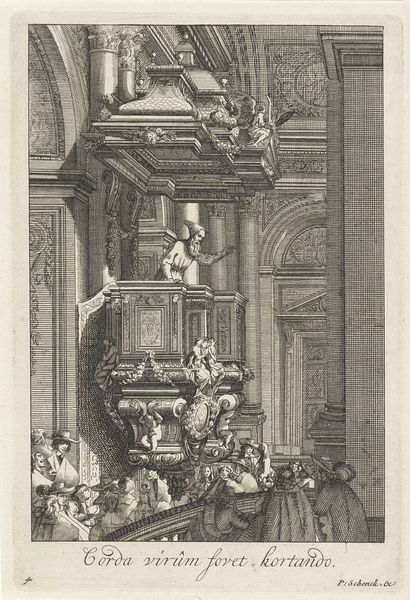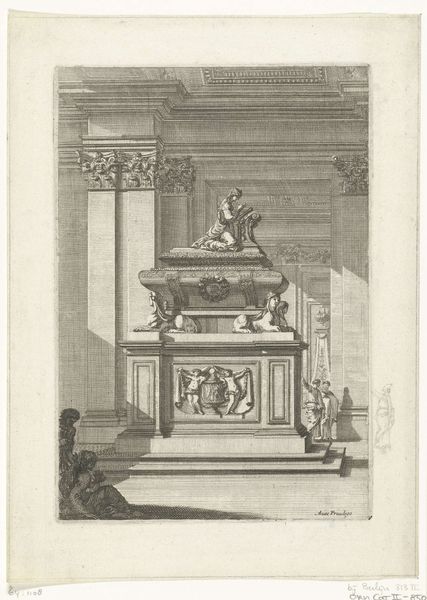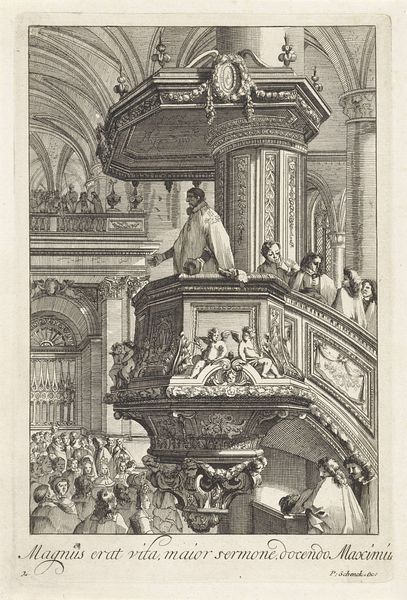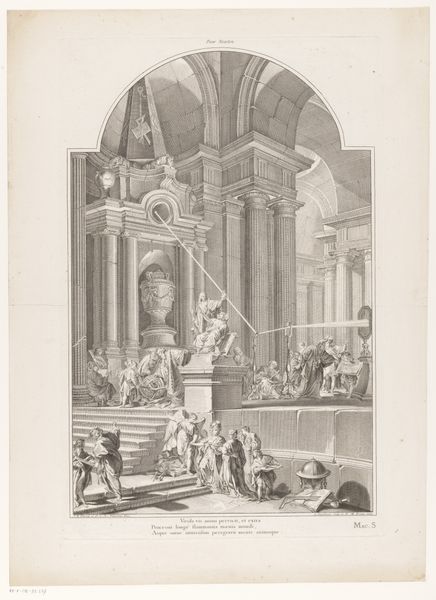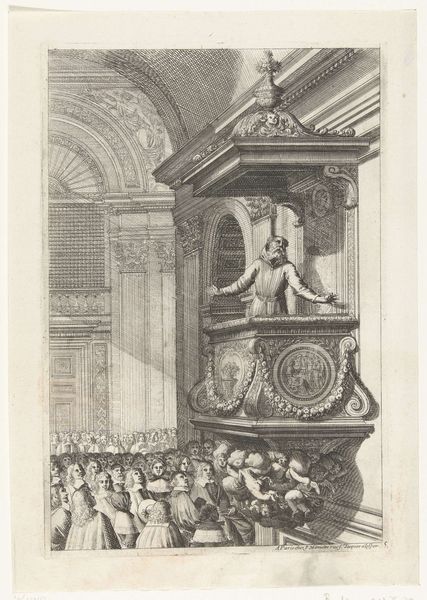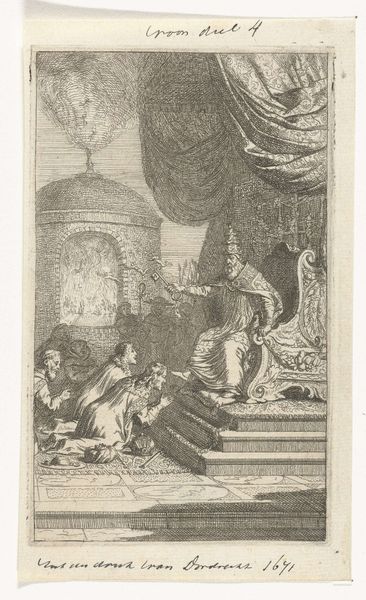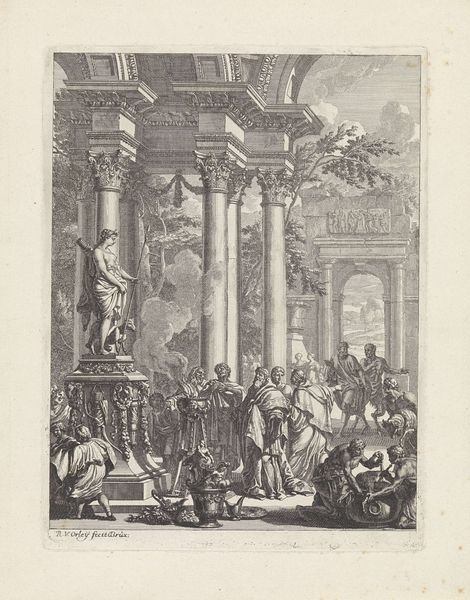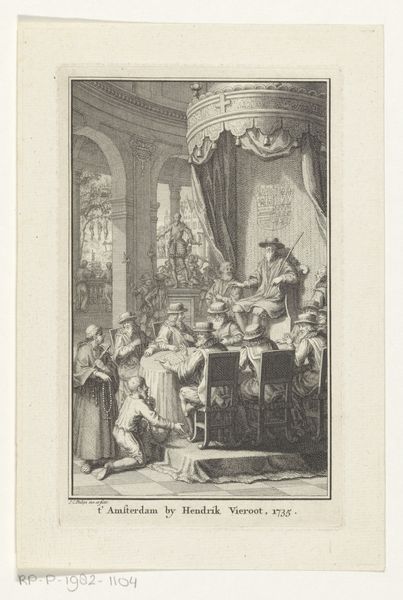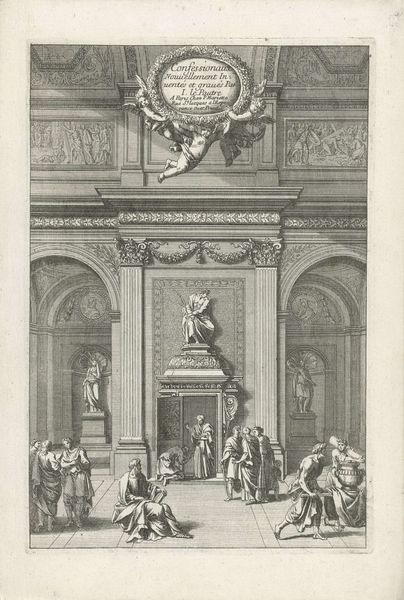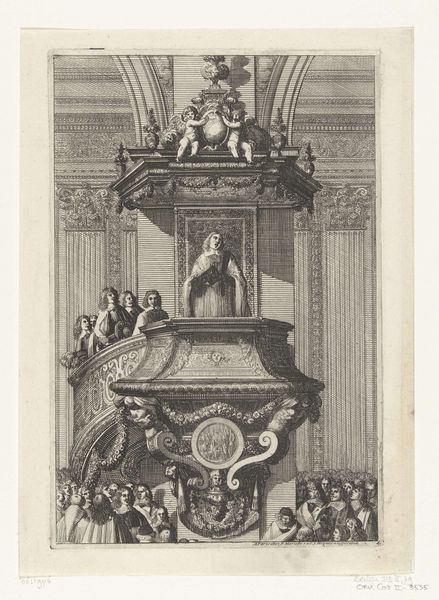
print, engraving, architecture
#
baroque
# print
#
old engraving style
#
line
#
genre-painting
#
engraving
#
architecture
Dimensions: height 220 mm, width 148 mm
Copyright: Rijks Museum: Open Domain
Editor: So, this engraving, "Kansel van opzij gezien," or "Pulpit Seen from the Side," was made around 1659 by Jean Lepautre. It depicts a church interior teeming with people and all sorts of Baroque ornamentation. I am drawn to how much movement is implied despite it being a still image. What aspects capture your imagination the most? Curator: You know, that's exactly it! It's like stepping into a grand theater. Lepautre isn't just showing us architecture; he's giving us a performance. The baroque loves drama, doesn't it? I think it's clever how he captures all of the levels of that interior and all those bustling bodies in a way that implies narrative. Do you think it feels like an illustration of a key event, or more of a tableau vivant? Editor: A tableau vivant is an intriguing way to put it. Maybe both? I'm struck by how Lepautre manages to capture light in such a linear medium; all those engraved lines create an illusion of depth and atmosphere, it is quite stunning really. I can almost feel the cool air of the cathedral. Curator: The line work is just divine! It reminds me of a spiderweb—fragile, yet strong enough to catch light and meaning. This makes me think about the way light behaved differently way back when, doesn't it? How do you think this space and light affect the experience of art? Editor: That's a beautiful thought; light catching meaning… It’s fascinating to imagine experiencing art in a time with more natural light and candlelight, shifting perspectives, deeper shadows, that we mostly miss these days. This definitely adds a spiritual and reflective dimension, almost meditative when viewing "Kansel van opzij gezien.” I have truly never thought of Baroque quite like that. Thank you!
Comments
No comments
Be the first to comment and join the conversation on the ultimate creative platform.
